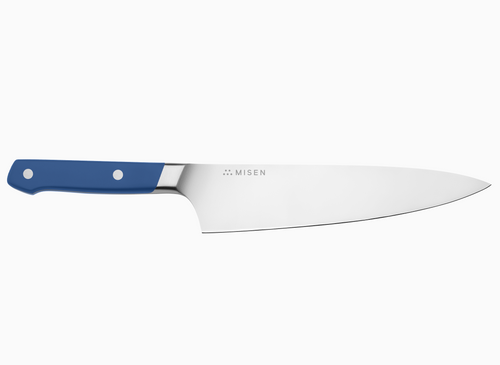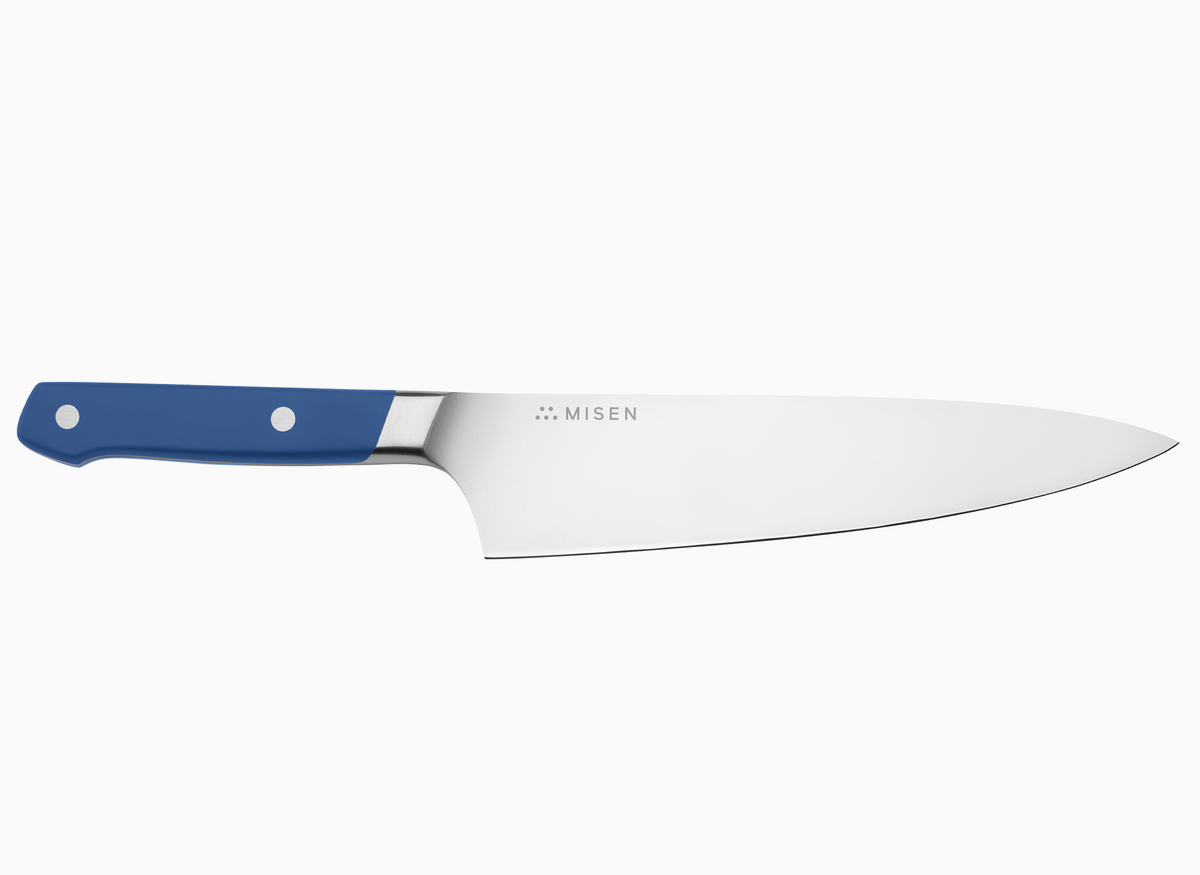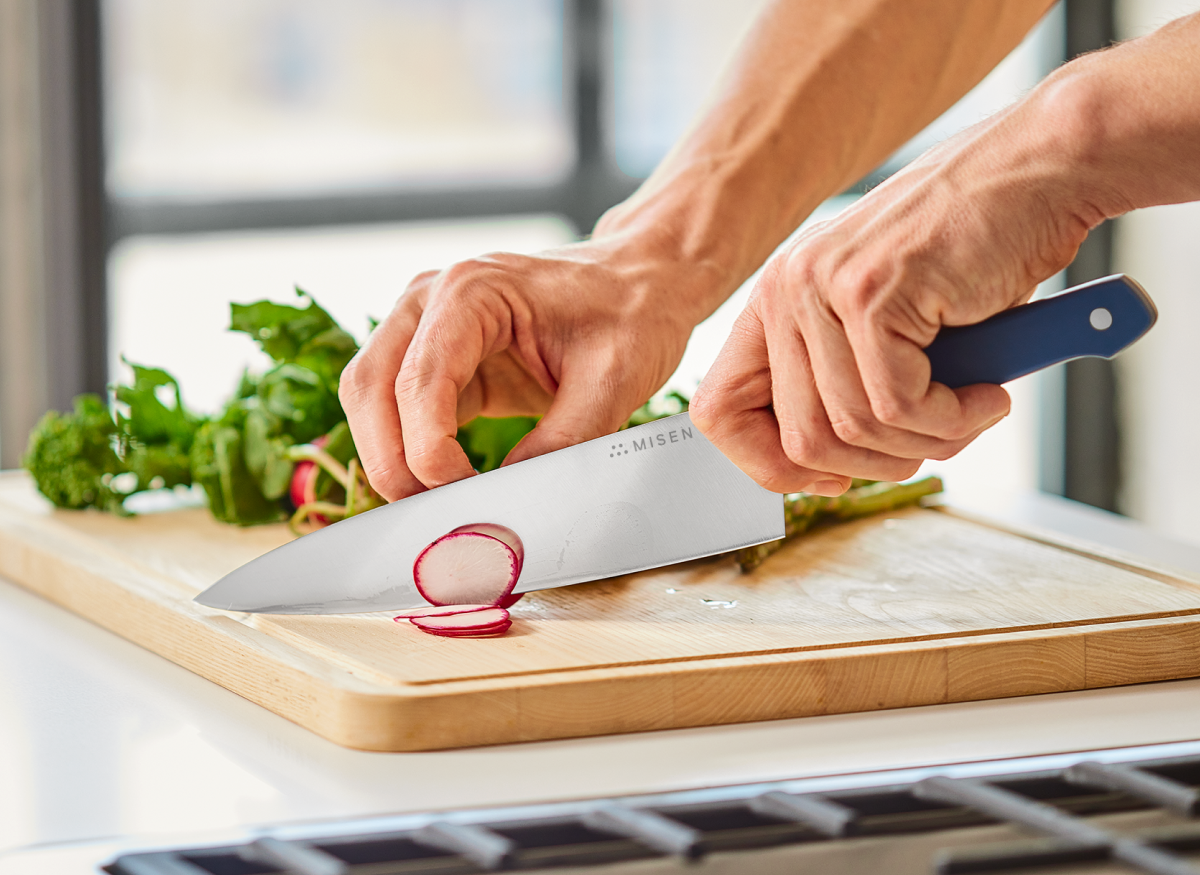How to Cut Garlic: Master This Essential Kitchen Skill
 Garlic is one of a chef’s best friends.
Garlic is one of a chef’s best friends.
- Garlic is a staple ingredient in a huge number of savory dishes.
- With some practice, cutting garlic can be accomplished in a few steps.
- Different techniques for cutting garlic produce different results.
Garlic adds depth and complexity to essentially any savory dish. Few things make a kitchen smell better than fresh garlic frying in olive oil. On top of that, garlic is known to have a host of health benefits — as if you needed an excuse to use it in your cooking.
Fresh garlic comes in many varieties, but usually the smallest purchasable amount is known as a head of garlic or a garlic bulb. A garlic bulb can hold upwards of a dozen individual cloves, depending on the variety and the individual head. The entire head is covered in a papery skin, and a single clove is wrapped in its own layer of skin, which needs to be peeled.
Peeling and chopping garlic are the two crucial steps in getting your garlic ready to use. They can be difficult if you don’t know how, so many people opt for pre-minced, jarred garlic. However, pre-chopped store-bought garlic has lost much of its flavor due to age. Knowing how to peel, chop, mince, and slice garlic will up your cooking game. So we’ll show you how to prep your garlic in a variety of ways.
Step 1: Separating the Cloves
 Garlic cloves need to be separated from the head before they’re cut.
Garlic cloves need to be separated from the head before they’re cut.
Before you can remove the skin from garlic, you’ll first need to separate a clove from the head. There are two ways to separate individual cloves from the head of garlic. You can either use your fingers to separate a clove from the head, or you can lay the head down with the root-stem facing up on a cutting board and press down with the heel of your hand. This will separate all the cloves from the head.
The first option is better if you only intend to use a few cloves. The second option is faster if you intend to use a whole head, but it can take some strength.
Do note that you can roast whole heads of garlic. Once it’s cooked in the oven, the cloves in the skin turn into an almost butter-like paste that can be spread on bread before the bread is dipped in olive oil. With that caveat in mind, you don’t always have to peel garlic or even remove it from the head, but you usually do.
Step 2: Removing the Skin
 To chop garlic, you need a knife and a cutting board.
To chop garlic, you need a knife and a cutting board.
Removing the skin is where things get a bit fun. To begin, take an individual garlic clove and place it on your cutting board. You can opt to slice off the ends, but it’s not strictly necessary.
Take your chef’s knife or santoku knife and place the broad, flat side of the blade on the clove of garlic. Make sure you’re using the part of the knife closest to the handle, since that’s where the blade is the strongest.
With the heel of your hand, press down until the clove is crushed. Use caution and keep your fingers away from the edge of the blade. Additionally, make sure you’re pressing down at a 90-degree angle to keep the blade from slipping.
Continue to press until the clove is crushed. The skin will be loose, and you can remove it with your fingers. Discard the skin.
Voilà! You are now the proud owner of a skinless clove of garlic. Repeat this as many times as necessary for the number of cloves called for in the recipe you’re using. With some practice, this process should only take you a matter of seconds for each individual clove.
Step 3: Chop, Mince, or Slice
 Chopped garlic is crucial in many recipes.
Chopped garlic is crucial in many recipes.
Now that you’ve peeled your garlic, it’s time to cut it down to size. You can use whole garlic cloves in a bouquet garni for slow cookers or soups, but most recipes will call for garlic to be cut somehow.
A note on garlic fineness: generally, the smaller pieces the garlic is cut into, the stronger flavor it’ll produce. In order for garlic to release its flavors, it needs to be beaten up so its enzymes can go to work. Finely minced garlic will release more flavor than coarsely chopped garlic. However, coarsely chopped garlic will hold up better to high temperatures and thus won’t burn as easily. Sliced garlic will produce the least strong flavor.
Chopping
 Hold your knife using a pinch grip, then chop.
Hold your knife using a pinch grip, then chop.
Chopping garlic is what a chef’s knife was born to do. Place your garlic cloves next to each other on the board and put your chef’s knife at a 90-degree angle to the board. Place your dominant hand on the handle of the knife, holding your thumb and index finger in a pinch grip towards the top of the blade where it meets the handle. The pinch grip will give you greater control of the knife. Use your secondary hand on the top side of the blade.
Using a rocking motion, push the knife up and down with the end of the blade resting on the board. Rotate the blade as necessary to chop the garlic. After each pass, use the spine, i.e. the non-blade side, of the knife and your hand to scoop the garlic into a pile where you can repeat the process. Continue passing back and forth until the garlic is chopped to your desired size.
Mincing
Minced garlic is essentially the same as chopped garlic — only finer. You could go the gadget route and use a garlic press, but it’s not necessary, and you may lose a significant amount of garlic from it getting stuck in the press.
The simplest way to get minced garlic rather than chopped garlic is to continue chopping it until it’s as fine as you’d like it to be. Hypothetically, enough mincing would lead to a garlic paste, though you may be better off using a food processor if that’s your goal.
Slicing
Some recipes call for thin slices of garlic rather than chopped or minced garlic. A chef’s knife is quite capable of tackling this task, but this is where a santoku knife truly shines. Its thin blade is designed for precisely such tasks.
Holding the garlic clove down with your fingertips curled under so your knuckle is nearest the knife and your fingertips are protected, take the edge of the knife and make a thin slice crosswise on the clove.
Different knives use different techniques. If you’re using a santoku, lift the whole blade between each slice and push forward with the blade on the clove as you cut down. If you’re using a chef’s knife, keep the end of the blade on the board and push the clove towards the knife with your free hand. If you’re new to this, go slowly to be safe.
Alternatives
Aside from a knife and a cutting board — which is all you really need to cut garlic — there are some gadget alternatives you can use.
A Garlic Press
Although making a mince can be accomplished with a knife and cutting board, a garlic press can be a shortcut to a super-fine garlic mince. All you need to do is put a whole clove into the garlic press and push forward. The garlic will be extruded through the end of the press. You can slice the extruded bit off with a knife and continue to push more garlic through.
Realistically, however, a garlic press is simply a gadget that will do little more than take up space in your kitchen since it doesn’t do anything a good knife can’t do.
A Food Processor
A food processor can be used to make a liquidy garlic paste, which may or may not be combined with olive oil. This can be useful for dishes like hummus or guacamole where you may not want visible pieces of garlic.
A Mortar and Pestle
 A mortar and pestle leads to thoroughly mixed pastes.
A mortar and pestle leads to thoroughly mixed pastes.
A mortar and pestle is a staple of many cuisines that feature bold, complex flavors, including Thai, Malaysian, Indonesian, and Mexican cuisines. A mortar and pestle is great for binding the flavor of garlic to other ingredients — like chilies, ginger, galangal, kaffir lime leaves, spices, and many other robust flavors — for a sauce or paste. Although a mortar and pestle is more work than a food processor, the flavor profile that results from it is far superior since the bruising of each ingredient releases its essential oils.
Chop On
Knowing how to properly chop garlic is one of the most crucial skills to master in the kitchen. Once you’ve mastered the technique, it’ll become second nature, and you’ll never want to buy jarred garlic again.
Using a sharp, high-quality knife is one of the best ways to maximize your garlic cutting potential. Check out Misen’s top-quality knives and you’ll love your kitchen prep.








